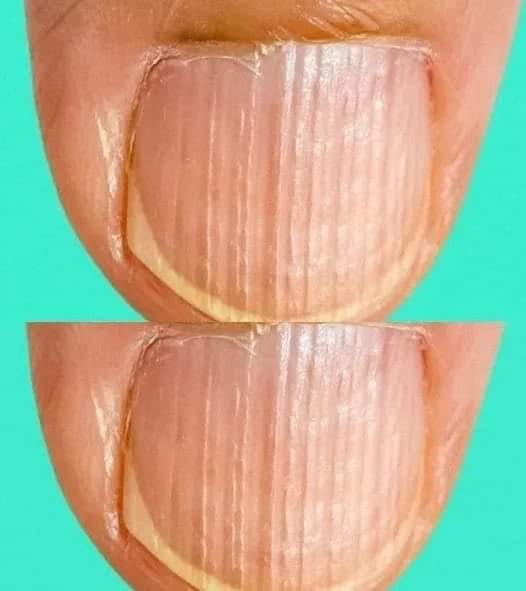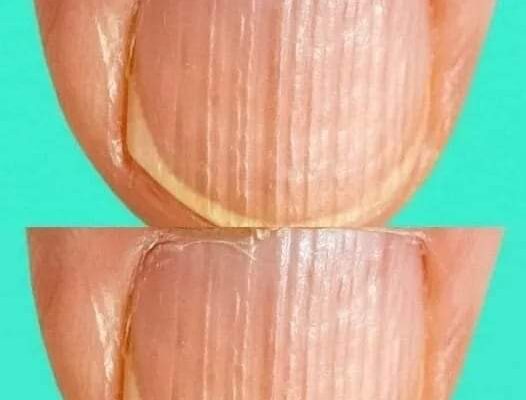
Have you ever looked down at your hands and noticed lines or ridges running across your nails? For many of us, these lines might seem like a harmless cosmetic issue, but they can actually provide valuable insights into your overall health. It’s natural to wonder: What causes these lines? Are they something to be concerned about? And most importantly, what can be done to get rid of them? Let’s dive into what these stripes on your nails might be indicating and how you can address them.

What Are the Lines on Your Nails?
The lines you might notice on your nails are generally called “nail ridges.” They can appear as vertical or horizontal lines, and they vary in depth and prominence. These lines can appear on both fingernails and toenails. In most cases, they are harmless and simply a part of the aging process. However, in some situations, they can be a sign that something is off with your body’s health.
Causes of Nail Ridges
Vertical ridges, which run from the cuticle to the tip of your nail, are often linked to aging. As we get older, our nails naturally start to change texture, becoming more brittle and developing fine lines. These vertical ridges are usually nothing to worry about and are just a normal part of the aging process.
However, if you notice horizontal ridges, also known as Beau’s lines, it could be a sign of something more serious. These ridges run across the nail from side to side and can indicate that your body is under stress or dealing with an underlying health condition. Some potential causes of horizontal ridges include:
-
- Nutrient Deficiencies: If you’re not getting enough essential nutrients in your diet, it can show up on your nails. For example, low levels of biotin, iron, or zinc can lead to ridges. This is often a sign that you may need to eat a more balanced diet or consider taking supplements.
- Dehydration: Just like your skin, your nails can suffer if you’re not drinking enough water. Dehydration can cause your nails to become dry and brittle, making ridges more pronounced.
- Health Conditions: In some cases, horizontal ridges may be a sign of more serious health conditions, such as thyroid disorders, diabetes, or heart disease. If you notice deep horizontal lines, it’s a good idea to consult with a healthcare professional to rule out any underlying issues.
- Stress and Illness: Your nails can reflect your body’s internal state. Severe physical stress, such as a high fever, surgery, or a serious illness, can temporarily stop nail growth, resulting in horizontal ridges. These lines typically grow out over time as your health improves.
How to Improve the Appearance of Your Nails
If you’re noticing lines on your nails, the good news is that there are steps you can take to improve their appearance and overall health. Here are some practical tips to keep your nails looking their best:
- Maintain a Balanced Diet: One of the most effective ways to keep your nails healthy is to ensure that you’re getting all the necessary nutrients. Focus on a diet rich in fruits, vegetables, lean proteins, and whole grains. Foods that are high in biotin, like eggs, nuts, and seeds, can be particularly beneficial for nail health.
- Stay Hydrated: Drinking plenty of water is crucial for your nails, skin, and overall health. Aim for at least 8 glasses of water a day to keep your nails hydrated and strong.
- Use Moisturizers: Just like your skin, your nails can benefit from regular moisturization. Apply a nourishing hand cream or cuticle oil to your nails to keep them hydrated, especially during colder months when they can become drier.
- Avoid Harsh Chemicals: If you frequently use nail polish remover, especially ones that contain acetone, it can strip your nails of their natural oils, leading to dryness and brittleness. Opt for acetone-free removers and give your nails a break from polish every once in a while to let them breathe.
- Practice Good Nail Hygiene: Keep your nails clean and trimmed to prevent breakage. Be gentle when filing your nails and avoid using metal tools that can damage the nail bed.
When to Seek Professional Help
While many nail ridges are harmless, it’s essential to know when they might be signaling something more serious. If you notice deep horizontal ridges, sudden changes in nail texture, discoloration, or if your nails are becoming unusually brittle, it’s a good idea to consult a doctor. These could be signs of underlying health issues that require medical attention.
Nails can act as a window into your overall health, so paying attention to any changes is crucial. If the ridges are accompanied by other symptoms, such as hair loss, fatigue, or unexplained weight changes, it could indicate a more significant problem that needs to be addressed.
Preventing Nail Issues in the Future
To keep your nails healthy and free from ridges, consider adopting a few simple lifestyle changes:
- Eat a Nutritious Diet: Consuming foods rich in vitamins and minerals is key to preventing nutrient deficiencies that can cause nail problems.
- Stay Active and Manage Stress: Regular exercise and stress management techniques like yoga or meditation can improve your overall health, which in turn benefits your nails.
- Get Regular Check-Ups: Routine health check-ups can help catch potential problems early, preventing them from manifesting as physical symptoms like nail ridges.
Final Thoughts
Noticing lines on your nails can be surprising, but in most cases, they’re nothing to worry about. Your nails can tell you a lot about your body, and paying attention to them can help you stay on top of your health. If you ever have concerns about changes in your nails, it’s always best to consult a healthcare professional for peace of mind.
So, next time you notice those lines, remember that they might just be your body’s way of signaling that it needs a little extra care. Whether it’s drinking more water, eating better, or reducing stress, small changes can go a long way in improving the health of your nails—and your overall well-being.



